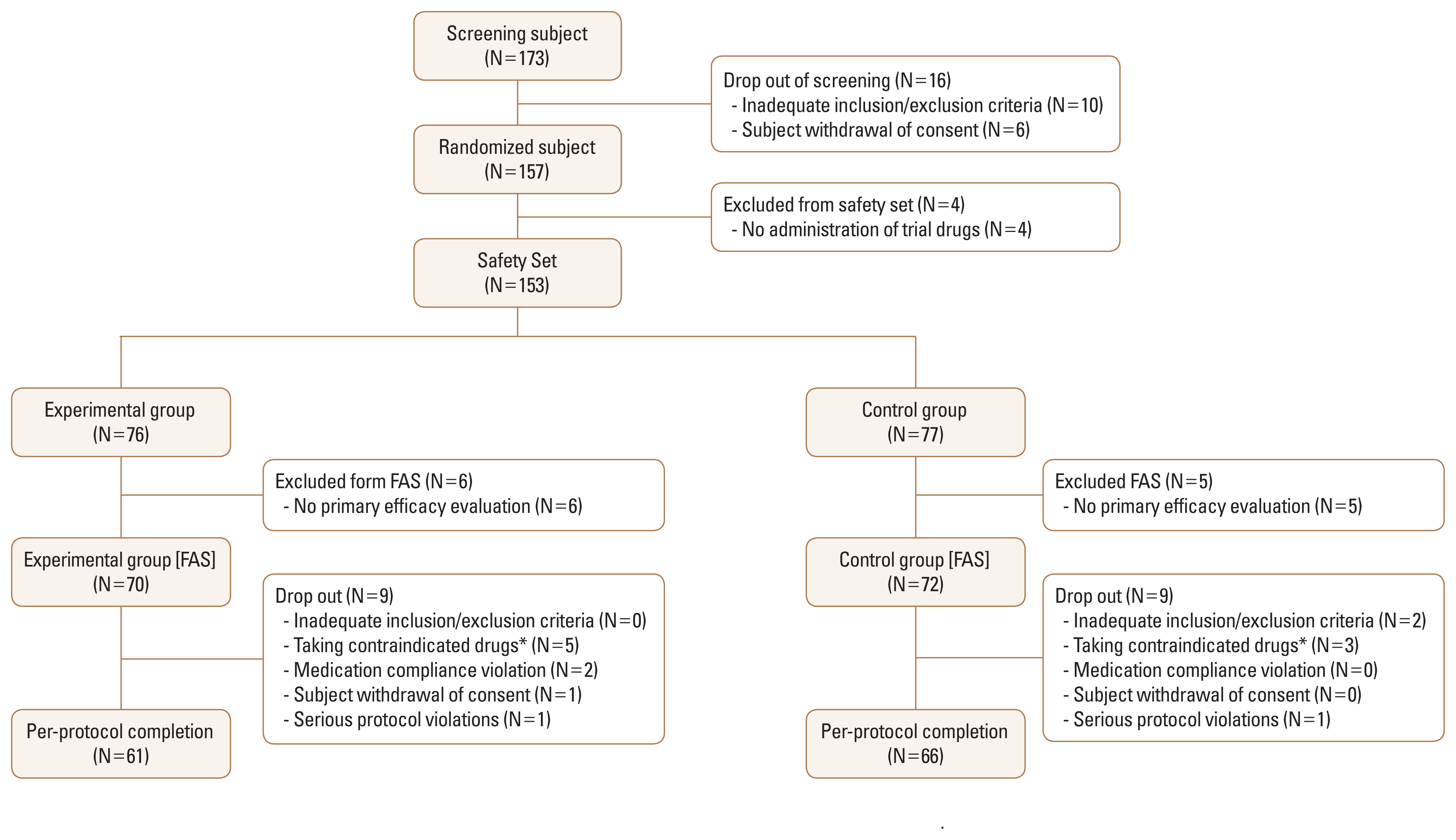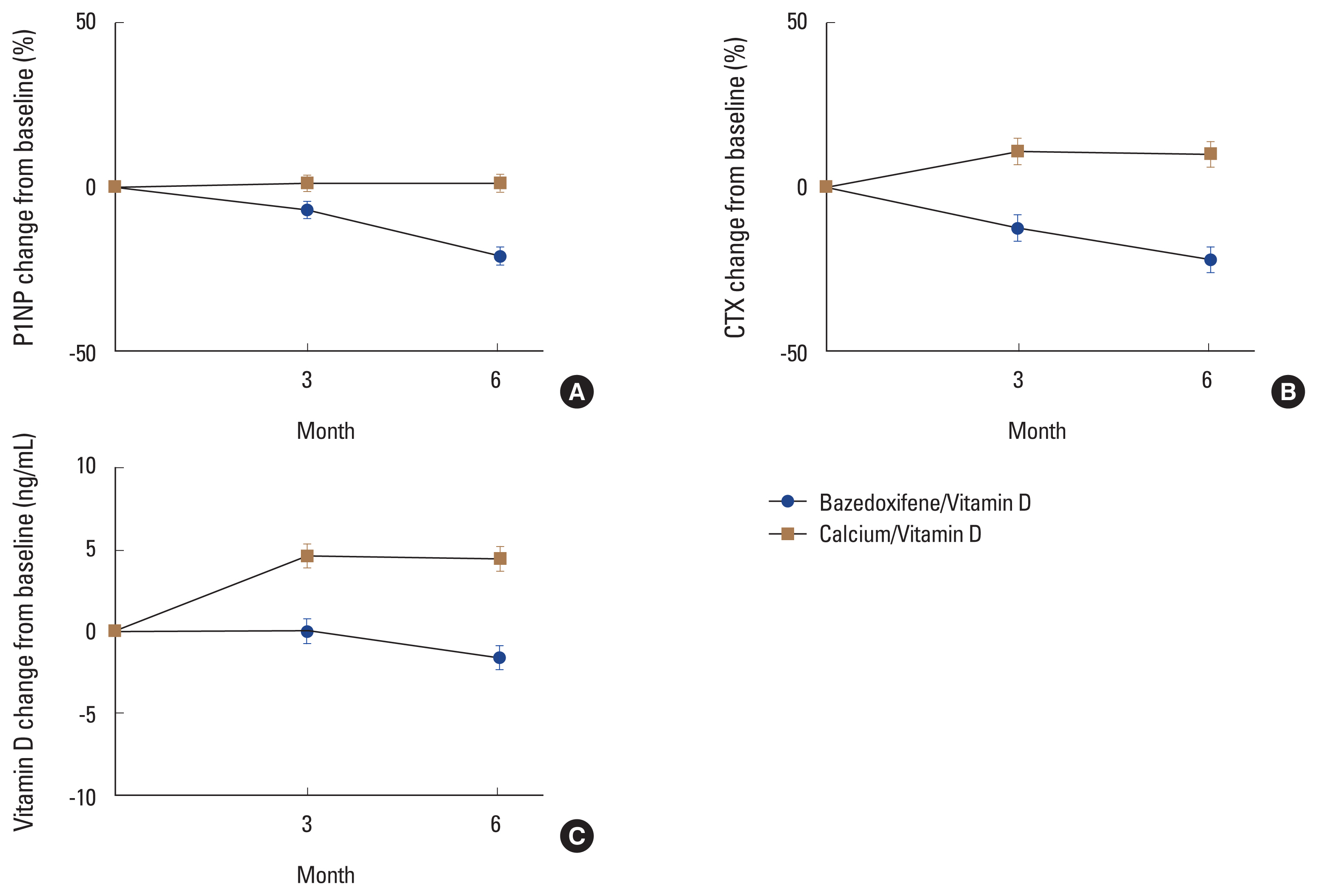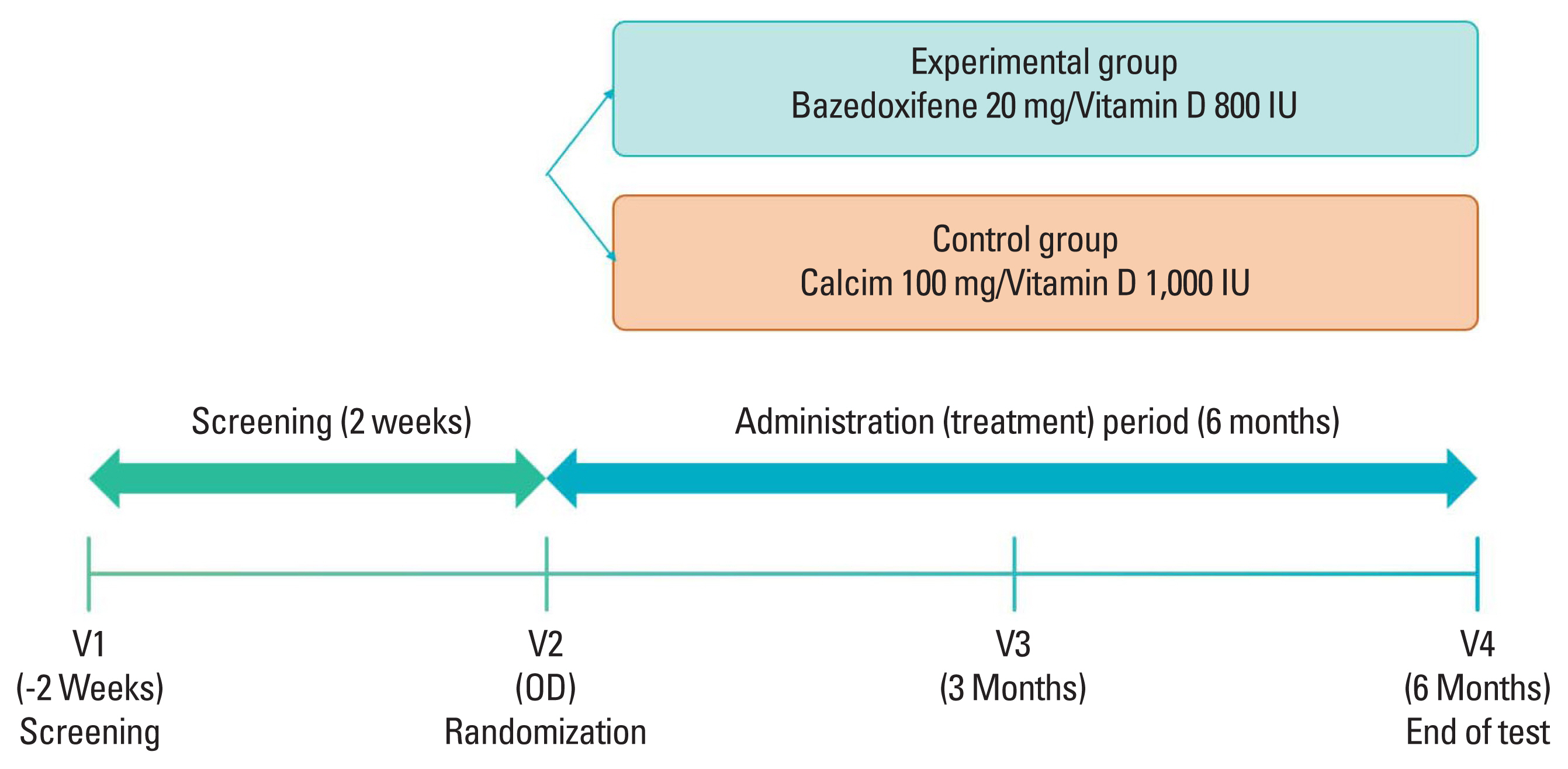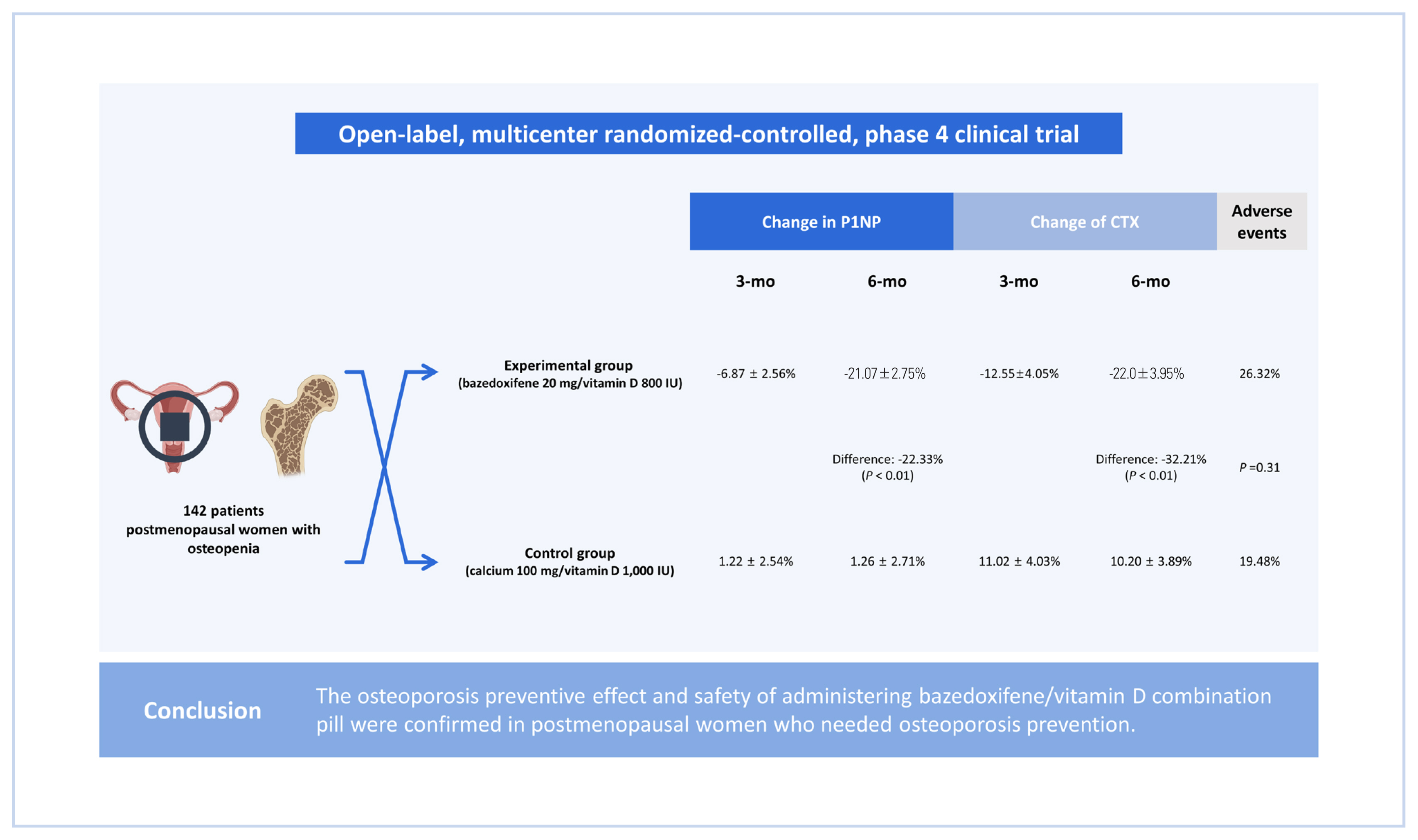5. Kim HY, Ha YC, Kim TY, et al. Healthcare costs of osteoporotic fracture in Korea: Information from the national health insurance claims database, 2008-2011. J Bone Metab 2017;24:125-33.
https://doi.org/10.11005/jbm.2017.24.2.125.



6. Park H, Yang H, Heo J, et al. Bone mineral density screening interval and transition to osteoporosis in asian women. Endocrinol Metab (Seoul) 2022;37:506-12.
https://doi.org/10.3803/EnM.2022.1429.



8. Bischoff-Ferrari HA, Kiel DP, Dawson-Hughes B, et al. Dietary calcium and serum 25-hydroxyvitamin D status in relation to BMD among U.S. adults. J Bone Miner Res 2009;24:935-42.
https://doi.org/10.1359/jbmr.081242.



9. Holick MF, Binkley NC, Bischoff-Ferrari HA, et al. Evaluation, treatment, and prevention of vitamin D deficiency: an Endocrine Society clinical practice guideline. J Clin Endocrinol Metab 2011;96:1911-30.
https://doi.org/10.1210/jc.2011-0385.


10. Ross AC, Taylor CL, Yaktine AL, et al. Institute of Medicine (US) committee to review dietary reference intakes for vitamin D and calcium. National Academies Press. The national academies collection: reports funded by national institutes of health. Washington, DC: National Academies Press; 2011. NBK56070.
12. Halpern R, Becker L, Iqbal SU, et al. The association of adherence to osteoporosis therapies with fracture, all-cause medical costs, and all-cause hospitalizations: a retrospective claims analysis of female health plan enrollees with osteoporosis. J Manag Care Pharm 2011;17:25-39.
https://doi.org/10.18553/jmcp.2011.17.1.25.


13. Sampalis JS, Adachi JD, Rampakakis E, et al. Long-term impact of adherence to oral bisphosphonates on osteoporotic fracture incidence. J Bone Miner Res 2012;27:202-10.
https://doi.org/10.1002/jbmr.533.


14. Du LP, Cheng ZW, Zhang YX, et al. The impact of fixed-dose combination versus free-equivalent combination therapies on adherence for hypertension: a meta-analysis. J Clin Hypertens (Greenwich) 2018;20:902-7.
https://doi.org/10.1111/jch.13272.



15. Tsioufis K, Kreutz R, Sykara G, et al. Impact of single-pill combination therapy on adherence, blood pressure control, and clinical outcomes: a rapid evidence assessment of recent literature. J Hypertens 2020;38:1016-28.
https://doi.org/10.1097/hjh.0000000000002381.



20. Miller PD, Chines AA, Christiansen C, et al. Effects of bazedoxifene on BMD and bone turnover in postmenopausal women: 2-yr results of a randomized, double-blind, placebo-, and active-controlled study. J Bone Miner Res 2008;23:525-35.
https://doi.org/10.1359/jbmr.071206.


21. Black DM, Delmas PD, Eastell R, et al. Once-yearly zoledronic acid for treatment of postmenopausal osteoporosis. N Engl J Med 2007;356:1809-22.
https://doi.org/10.1056/NEJMoa067312.


22. Liang BC, Shi ZY, Wang B, et al. Intravenous zoledronic acid 5 mg on bone turnover markers and bone mineral density in east China subjects with newly diagnosed osteoporosis: A 24-month clinical study. Orthop Surg 2017;9:103-9.
https://doi.org/10.1111/os.12307.



23. Cummings SR, San Martin J, McClung MR, et al. Denosumab for prevention of fractures in postmenopausal women with osteoporosis. N Engl J Med 2009;361:756-65.
https://doi.org/10.1056/NEJMoa0809493.


24. Eastell R, Black DM, Lui LY, et al. Treatment-related changes in bone turnover and fracture risk reduction in clinical trials of antiresorptive drugs: Proportion of treatment effect explained. J Bone Miner Res 2021;36:236-43.
https://doi.org/10.1002/jbmr.4178.


27. Jacques RM, Boonen S, Cosman F, et al. Relationship of changes in total hip bone mineral density to vertebral and nonvertebral fracture risk in women with postmenopausal osteoporosis treated with once-yearly zoledronic acid 5 mg: the HORIZON-Pivotal Fracture Trial (PFT). J Bone Miner Res 2012;27:1627-34.
https://doi.org/10.1002/jbmr.1644.


28. Bruyère O, Detilleux J, Chines A, et al. Relationships between changes in bone mineral density or bone turnover markers and vertebral fracture incidence in patients treated with bazedoxifene. Calcif Tissue Int 2012;91:244-9.
https://doi.org/10.1007/s00223-012-9629-y.


29. Vergnaud P, Garnero P, Meunier PJ, et al. Undercarboxylated osteocalcin measured with a specific immunoassay predicts hip fracture in elderly women: the EPIDOS Study. J Clin Endocrinol Metab 1997;82:719-24.
https://doi.org/10.1210/jcem.82.3.3805.


31. Christiansen C, Chesnut CH 3rd, Adachi JD, et al. Safety of bazedoxifene in a randomized, double-blind, placebo- and active-controlled Phase 3 study of postmenopausal women with osteoporosis. BMC Musculoskelet Disord 2010;11:130.
https://doi.org/10.1186/1471-2474-11-130.



32. de Villiers TJ, Chines AA, Palacios S, et al. Safety and tolerability of bazedoxifene in postmenopausal women with osteoporosis: results of a 5-year, randomized, placebo-controlled phase 3 trial. Osteoporos Int 2011;22:567-76.
https://doi.org/10.1007/s00198-010-1302-6.


36. Kim KM, Choi HS, Choi MJ, et al. Calcium and vitamin D supplementations: 2015 position statement of the Korean society for bone and mineral research. J Bone Metab 2015;22:143-9.
https://doi.org/10.11005/jbm.2015.22.4.143.



37. Madar AA, Knutsen KV, Stene LC, et al. Effect of vitamin D(3)-supplementation on bone markers (serum P1NP and CTX): A randomized, double blinded, placebo controlled trial among healthy immigrants living in Norway. Bone Rep 2015;2:82-8.
https://doi.org/10.1016/j.bonr.2015.05.004.



38. Aloia J, Bojadzievski T, Yusupov E, et al. The relative influence of calcium intake and vitamin D status on serum parathyroid hormone and bone turnover biomarkers in a double-blind, placebo-controlled parallel group, longitudinal factorial design. J Clin Endocrinol Metab 2010;95:3216-24.
https://doi.org/10.1210/jc.2009-1294.























 PDF Links
PDF Links PubReader
PubReader ePub Link
ePub Link Full text via DOI
Full text via DOI Download Citation
Download Citation Supplement1
Supplement1 Print
Print



